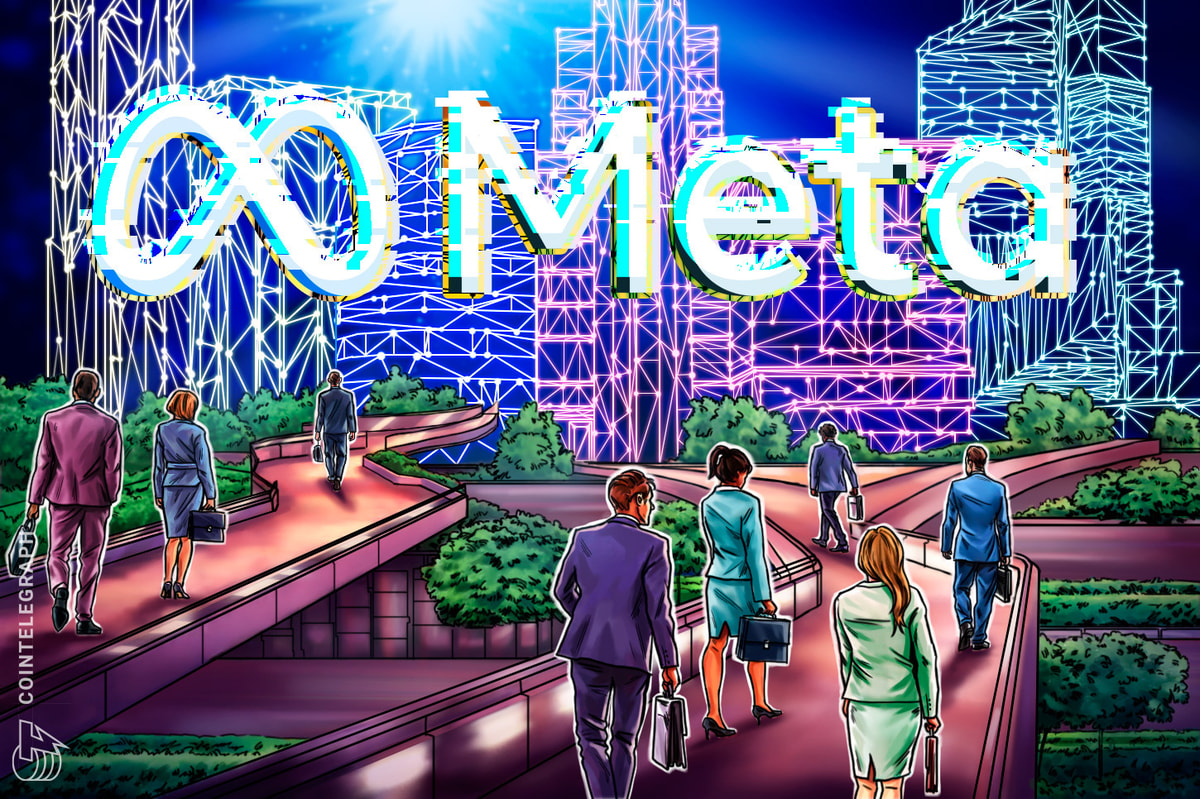What is augmented reality?
Augmented reality (AR) is a technology that enriches the user’s perception and provides a live view of the real world with digital information, aiming to expand it by adding images, sound, video and other virtual details.
The purpose of AR is to augment the environment and let virtual elements interact with real objects to create intended meanings. In AR, informatively-designed virtual environments coexist with the real ones by providing additional data about the real world. So, how does augmented reality work?
Most often, special equipment is not needed to create an AR, which is usually generated by common devices, mainly smartphone cameras, instead. Virtual three-dimensional (3D) objects and environments are superimposed by AR systems on real-world objects in real time based on their geometric relationships since the systems calculate the position and orientation of objects relative to others.
Today, AR technology is commonly complemented by mobile phone technologies such as GPS, 3G, 4G and remote sensing. The combined image is usually projected onto mobile screens, augmented reality glasses and other devices.
Examples of AR systems are those that are used in photography and editing like Snapchat filters, virtual dressing rooms, interior decoration applications like IKEA mobile as well as virtual battlefields, and games such as Nintendo's Pokémon Go. Moreover, AR is also widely used in marketing, and medical and healthcare applications.
What is virtual reality?
Virtual reality (VR) is a technology and method that regenerates 3D digital images and videos to create real visual experiences for users. So, how does virtual reality work?
The purpose of VR is to create an illusion of immersion in a life-size 3D digital environment. To make 3D images and videos, much of which reproduce the real or imaginary world, VR systems usually use computer vision and advanced graphics that add depth and reconstruct the scale and distance between static two-dimensional (2D) images. All this together is designed to replace a real-life environment with a simulated one, creating an immersive effect that feels like you are part of the particular computer-generated digital environment that you are viewing.
To explore and control 3D environments, users utilize computers and sensory devices like VR headsets and gloves. Due to the special lenses in the VR headset and controllers, which have sensors, users can experience virtual content and interact with it naturally just like in the real world.
Some modern VR devices are more advanced than 3D. They have real-time tracking features that enable the use of VR in real-time explorations and allow users to experience their VR environment through all five human senses.
Examples of VR include entertainment applications, particularly video games, education applications such as classroom training, and business applications that are generally used for virtual meetings.
Augmented reality vs. virtual reality
While both AR and VR are designed to provide users with a simulated computer-generated 3D experience, each technology is unique and includes distinct use cases. So what is the main difference between AR and VR?
An important distinction between them is that VR tends to replace the real world up to total immersion, while AR attempts to add the virtual by projecting digital information on top of the environment already being viewed by the users.
Also, since VR tends towards full immersion, devices require shutting users off from the real world by blocking their field of vision to present VR content instead. Thus, VR is best explored with special equipment such as a VR headset or gloves. At the same time, it is possible to use AR in two-dimensional (2D) and 3D environments very easily, such as on a smartphone.

Advantages and disadvantages of augmented reality
AR can help create an entirely new, interactive experience for users, and as with any technology, AR has its pros and cons, which are usually compared to those of VR.
One of the main benefits of AR is that it is a great educational tool that can provide rich content and context. AR has the potential to increase users’ knowledge and awareness by providing an enhanced experience. It offers personalized learning, fostering the learning process. Due to AR technology, users can share experiences with others in real-time over long distances.
Among its other benefits is that its applications are really easy to use as AR systems are usually less affected by device limitations. AR provides more freedom for smartphone users and more opportunities for AR developers and marketers since there is no need for a head-mounted display.
Users just need to point their camera at an object, and the AR app will show what it does with that particular item. Nevertheless, a high bandwidth is still required to create high-resolution and life-like objects for top-quality experiences.
Moreover, AR’s great advantage is that it is now used in a wide variety of fields like gaming, marketing, education and healthcare, and has multiple applications for training, learning, navigation, design and entertainment (Snapchat, Google Lens, IKEA Place, et cetera). However, the lack of privacy and security is a major drawback of AR. It may seriously affect the overall augmented reality principle.
Among its other disadvantages, low adoption and application in day-to-day use remain. Current limitations of 3D systems that produce and support 3D visualizations, especially in real-time, slow down the spread of AR technology. It is still complicated and quite costly to develop, implement and maintain AR technology-based projects and their applications.
And it is worth noting that extreme engagement with AR can cause health issues. Too frequent and intense pastimes in AR can lead to major healthcare hazards such as eye problems, obesity, mental health problems, et cetera.
Advantages and disadvantages of virtual reality
VR does come with several merits, and various areas have already been positively affected by the implementation of this technology.
First of all, VR helps create a realistic world so that users can explore and experiment with an interactive artificial environment. VR is more immersive than AR in terms of immersion and a virtual sense of presence. It gives users playing games or watching videos the impression of actually being in a different world.
One of the most important advantages of VR is that it makes education and practice easier, safer and more comfortable for users. The possibility of conducting training and practicing potentially dangerous real-world operations like surgery, plane flight or combat without any risk by simulating them is one of the technology’s best benefits.
On the other hand, training in a VR environment never has the same result as practicing and working in the real world, and this is one of the technology's significant drawbacks. In this way, if a user does well with simulated tasks in a generated 3D VR environment, there is still no guarantee that a person would perform the same tasks as well in the real world.
Furthermore, the high price of VR systems discourages regular and ordinary usage. Not everyone can afford VR devices as they do not come cheap. Irrespective of the decrease in the price of VR technology over the years, it still has not been widely adopted. Low adoption means there are not many VR systems out there, and this then limits customer options.
There are also a lot of health concerns. VR could affect users’ health; the technology must be improved before it can be used without its users experiencing temporary side-effects such as blurred vision, headache and nausea.
The possibility of progressive escapism is another issue. It became a long-term commonplace among VR users who then started to live in virtual environments instead of dealing with the real world. After spending significant amounts of time in the virtual world, they tended to enjoy it more, and as a result, spent even more time using VR, which eventually led them to become isolated from the real world.
Applications of augmented reality
Essentially, AR applications allow users to do interesting, location-specific things at their location or things that connect virtual and real-life objects and experiences.
Types of AR applications vary. For instance, AR applications are widely used in retail and advertising. By presenting 3D models of products and helping consumers to make better choices, AR has the potential to improve customer experiences. AR applications can be used to lead customers to virtual stores and rooms.
They can boost remote design, give users a virtual walkthrough of a given piece of real estate or a better idea of how a sofa will fit into their house, or allow them to look at furniture from home and select suitable items to match their space.
Printing and advertising industries use AR technology applications to display 3D digital content on top of real-world newspapers and magazines to help companies popularize their brands to users.
In addition to placing advertisements on AR content, AR applications can be used by tourists for navigation, by providing data on destinations, directions and sightseeing. They may allow users to get suggestions for hotels that they can visit or preview a menu from which they might order. On top of that, AR enables virtual tourism.
Also, for drivers, AR applications can give directions to locations or show statistics about speed, assist in advanced navigation and help mark objects in real-time.
There are also a lot of AR games like Pokémon GO, Jurassic World Alive, et cetera and plenty of them are blockchain-based, such as DogemonGo and Terra Virtua, among others. The technology facilitates the development of real-time 3D games for better gaming experiences. Due to AR, gaming grounds in virtual environments are being improved so that users can perform real-world activities.
Another use case is remote collaboration. In manufacturing and maintenance, professionals can direct repair technicians to perform repair and maintenance work using AR applications without the technicians being on site.
AR can help train healthcare workers, or diagnose patients, and plan and monitor critical health situations. For regular users, fitness AR applications can show users’ heart rates and other healthcare data on-screen while the users exercise.
Other examples are architecture and urban design, as now, AR more and more often aids in visualizing building projects. It is also used for urban regeneration and planning as well as for transportation projects.
Applications of virtual reality
Virtual reality applications provide an immersive sensory experience that digitally simulates an artificial environment. Such applications can be developed in various fields.
Entertainment is the most common and popular use case for VR applications. Immersive experiences in video gaming, virtual music concerts, travel simulations and an opportunity to view films and scenes in 360 degrees are just some notable examples.
VR can present high definition, 3D interactive imaging, which recommends itself as a great opportunity and an alternative channel for digital marketing and advertising needs.
Due to VR technology, employees can meet and collaborate remotely while feeling they are in the presence of others. Businesses can use it as a brainstorming tool, to test new ideas before the launch or discussing them with partners and collaborators. VR allows engineers and designers to experiment easily with the look and build of a vehicle before commissioning expensive prototypes.
What's more, VR is a proven way to rehabilitate. Immersive virtual reality technology is capable of recreating life-like natural experiences, and real-time 3D rendered environments. It is used in social sciences, psychology and clinical therapy since VR visuals can help distract patients from their suffering and affect the pathways by which pain travels to the brain.
In recent years, VR has become a primary method for treating post-traumatic stress disorder. Now, VR applications are widely used to soothe patients, manage anxiety symptoms and treat social and autism disorders. With the rise of social distancing, VR systems are used as digital training devices for medical simulation.
Apart from healthcare simulation, VR is used for training and learning in many different fields. For instance, the military uses VR for flight and battlefield simulations. It is also used in sports, creating the necessary conditions to play, and helping athletes to measure their performance and analyze their techniques. Such training develops skills without real-world consequences, saves costs, and does not put users in danger.
Furthermore, VR could revolutionize and democratize education by enabling users to learn interactively and experientially from anywhere in the world.
What is mixed reality (MR)?
The term mixed reality (MR) refers to a hybrid of AR and VR, the merging of the virtual and physical environments to produce a new environment where interactions among virtual and physical items are enabled in real-time.
Unlike VR systems, which immerse users in completely virtual worlds, or AR, which overlays digital content on top of the real world without taking into account its unique and dynamic structure, MR systems constantly collect new information about the environment and what is occurring within it. MR unites the virtual and physical worlds so that they are intertwined.
MR is a rapidly growing field. A number of MR applications have been used in entertainment, education, design, healthcare, military training, marketing and remote working, to name a few.
Furthermore, AR, VR, and MR phenomena are inextricably linked with extended reality (XR). XR merges all digital and physical and combines human-machine interactions through the use of wearables such as headsets and devices.
Role of virtual reality and augmented reality in the metaverse
The metaverse refers to a simulated digital environment that combines multiple elements of technology, such as AR, VR, MR and blockchain, along with social media concepts to create spaces that enrich users' interaction by mimicking the real world.
As a shared 3D virtual space with online infrastructure and real-time events, and with ever-evolving aspects which are collectively shared by its inhabitants, the metaverse is expected to change the way people interact with each other, connecting the virtual and physical worlds.
The real and virtual are merged in the metaverse using AR and VR technologies, which play a key role in the metaverse’s formation. Augmented reality technology allows for embedding 3D visualizations into the real physical world, and offers real-time interaction.
VR is seen as an integral component of the new metaverse ecosystem, providing an immersive experience for users in a dynamic 3D virtual environment. Generally speaking, the metaverse is something users could leap into (via VR) or deliver to users’ reality (via AR).
The metaverse concept has been one of the hottest trends in the tech space lately, especially after Facebook’s announcement that it was rebranding to Meta, and giant companies like Microsoft, Google, and Sony dived into the metaverse with their unique platforms or started investing.
Currently, there are plenty of metaverses out there, for example, the popular virtual world Decentraland (MANA), the Pokemon-inspired play-to-earn metaverse game Axie Infinity (AXS) and the digital gaming platform The Sandbox (SAND).











